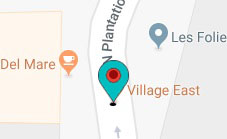Red Flags & Cauda Equina Syndrome

In 1991 the Clinical Standards Advisory Group (CSAG) was set up as an independent ‘expert source’ to advise the Ministry of Health. One of its functions was to advise on the ‘Clinical Standards’ for patients with back pain (CSAG 1994).
The report described the diagnostic indicators for serious spinal pathology- the red flags.
The five diagnostic categories for spinal disorders (CSAG 1994)
- Simple back ache (accounts for approx. 95% of back pain).
- Nerve root pain (accounts for less than 5% of back pain).
- Red Flags- i.e. potentially serious spinal pathology
- Cauda Equina Syndrome
- Inflammatory disorders
The Red flags (CSAG 1994)
- Age of first onset of severe spinal pain <20 or >55 years of age
- Violent trauma (RTA / fall from height)
- Constant, progressive, non-mechanical pain
- Night pain
- Thoracic pain
- Past Medical History of carcinoma
- Systemic steroid use, Drug abuse, HIV
- Systemically unwell
- Weight loss
- Persisting severe restriction of lumbar flexion
- Widespread neurology
- Structural deformity
Cauda Equina Syndrome
This is a rare disorder, but an emergency.
The Cauda Equina (named because it has the appearance of a horse’s tail) is formed by the nerve roots at the bottom of the spine. Cauda Equina Syndrome is caused by compression of these nerves, causing a combination of severe low back pain with or without pain into both or one leg, loss of sensation between the legs (the perineum), changes in bladder and bowel function, and variable lower limb muscle weakness and altered sensation.
Signs and Symptons of Cauda Equina Syndrome
- Loss of sensation between the legs/in the perineum.
- Disturbed bladder/bowel function (incontinence/retention).
- Severe back pain.
- Leg pain affecting one or both legs.
- Motor weakness and loss of reflex(es).
Patients presenting with true Cauda Equina Syndrome should present themselves to the Accident and Emergency Department.










